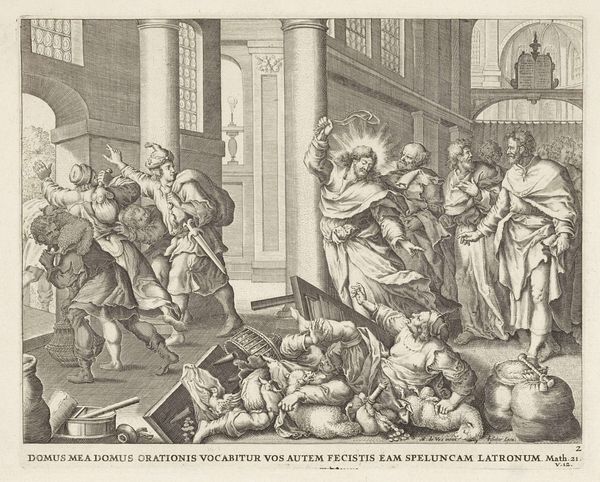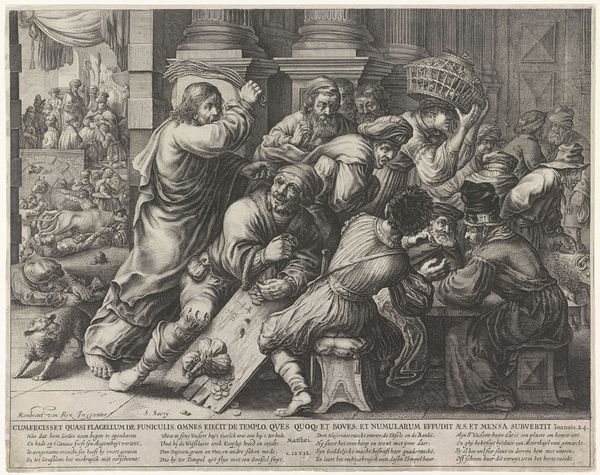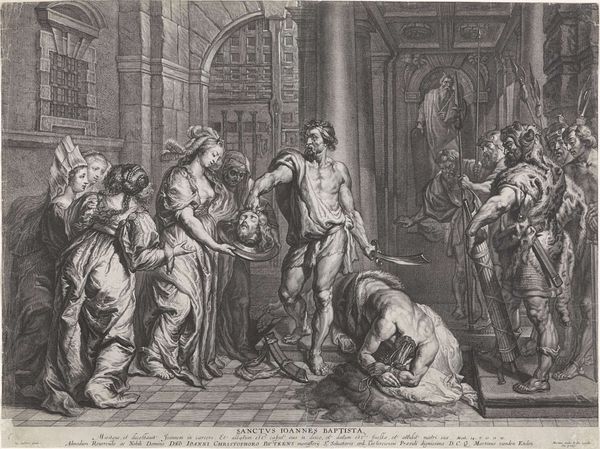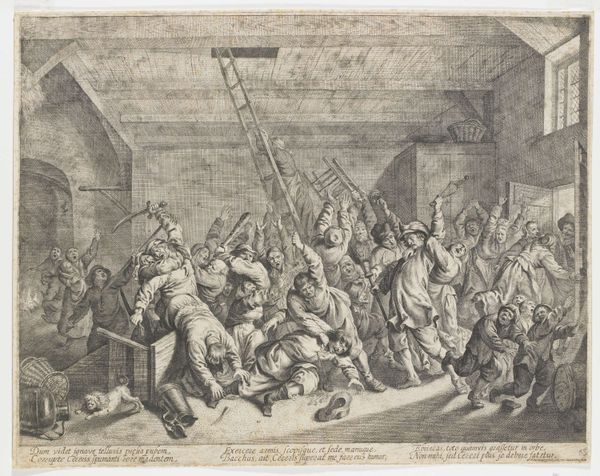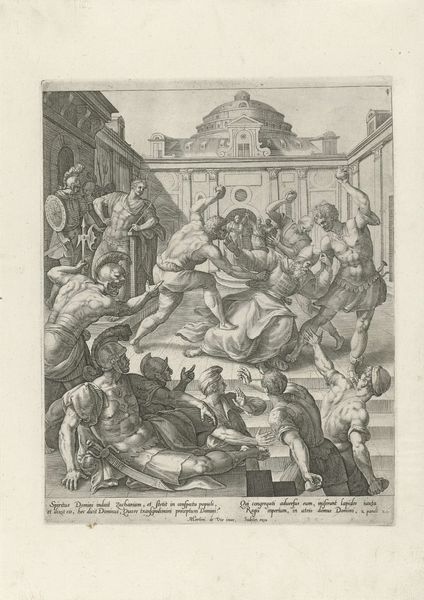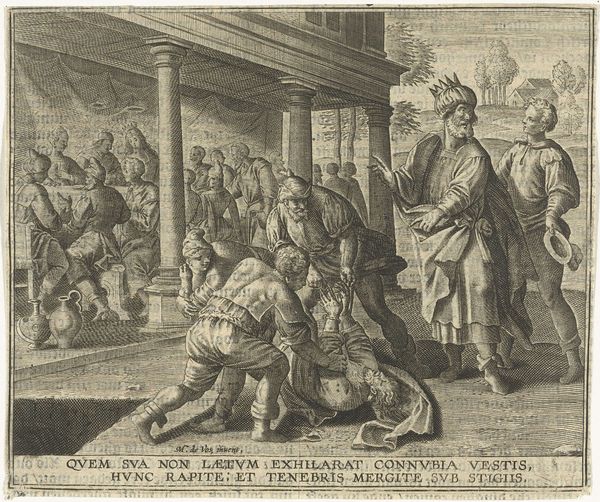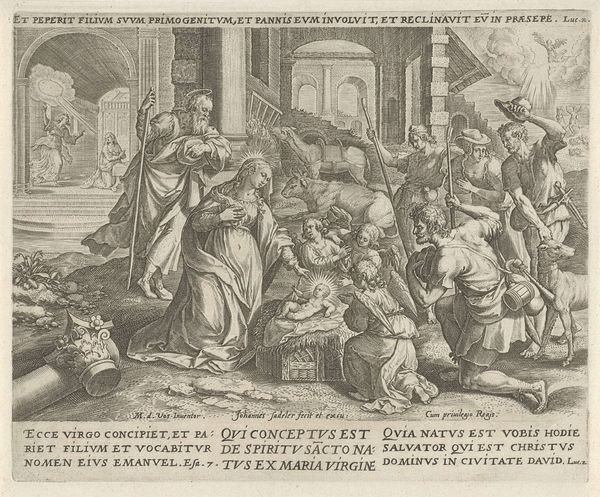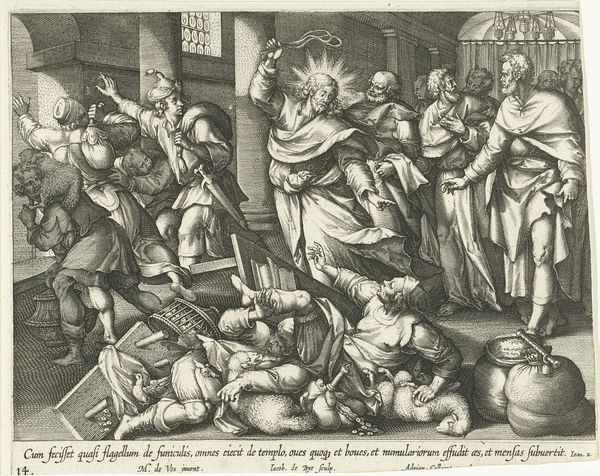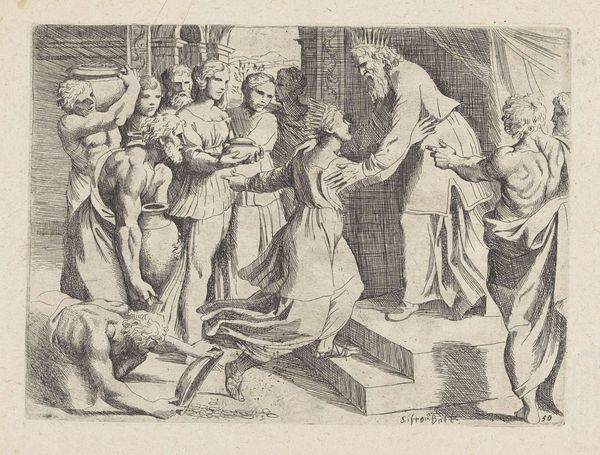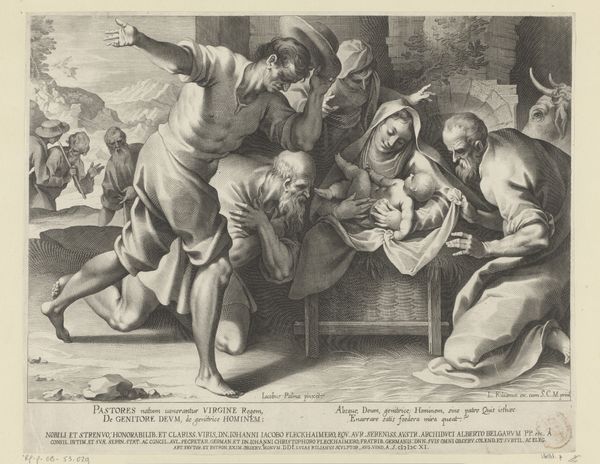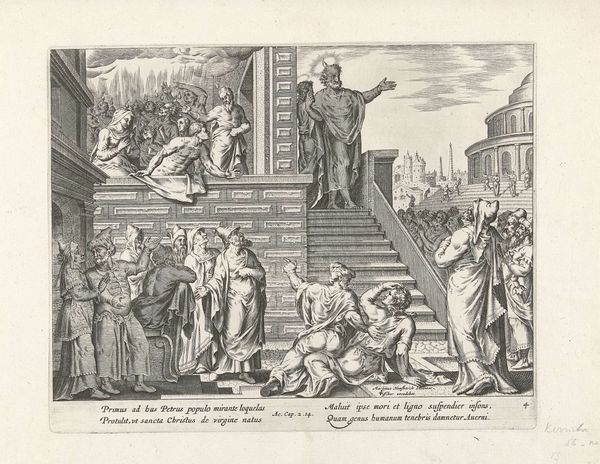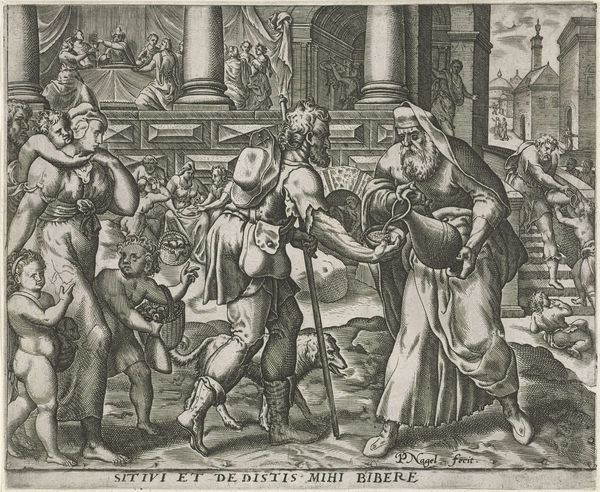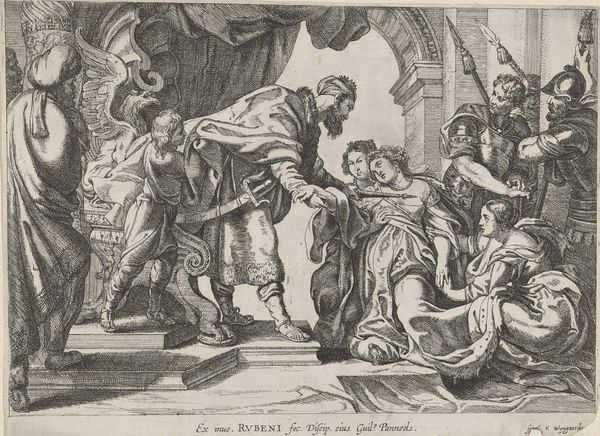
print, engraving
# print
#
mannerism
#
figuration
#
history-painting
#
engraving
Dimensions: height 126 mm, width 148 mm
Copyright: Rijks Museum: Open Domain
Curator: Let's turn our attention to Jan Collaert the Younger's engraving, "The Expulsion of the Money Changers from the Temple," created in 1597. It’s part of the Rijksmuseum's collection. Editor: My first thought is chaos! There's so much dynamic movement packed into this relatively small print. It feels almost violent. Curator: It is! Collaert is drawing from a powerful biblical narrative. The figure of Christ dominates, driving out the merchants profaning the sacred space. These depictions often served as social commentary on corruption within institutions, reflecting anxieties of the time. Editor: Absolutely. Look at the overturned tables, the scattered coins, even the frightened animals – they amplify that sense of disruption. And observe the ropes in Christ's hand, almost like a whip. It’s an aggressive purification. But what do you make of the fallen birdcage? Curator: It's interesting you noticed that. Birdcages often symbolize imprisonment, or even the soul. Here, its disruption likely alludes to spiritual liberation from earthly concerns. Consider the historical context: the late 16th century was rife with religious and social upheaval. Artists frequently embedded coded symbols like this. Editor: It’s remarkable how effectively Collaert uses such intricate detail. I noticed the figures reactions. Curator: Collaert's work clearly participated in a visual dialogue. Engravings like this were reproduced and distributed widely. This artwork was also used as a political message, expressing calls for reforms. Editor: Thinking about that widespread circulation really contextualizes the scene for me. It ceases being solely about that biblical moment and becomes a symbolic cry for change, something truly accessible to a wider audience. Curator: Exactly. And understanding that dynamic interplay helps us to comprehend not just the artwork itself, but its place within the tumultuous era that birthed it. Editor: This has revealed deeper nuances. Beyond just the initial impression of pandemonium, there's an urgency— a demand for purity in faith that really echoes even now.
Comments
No comments
Be the first to comment and join the conversation on the ultimate creative platform.
